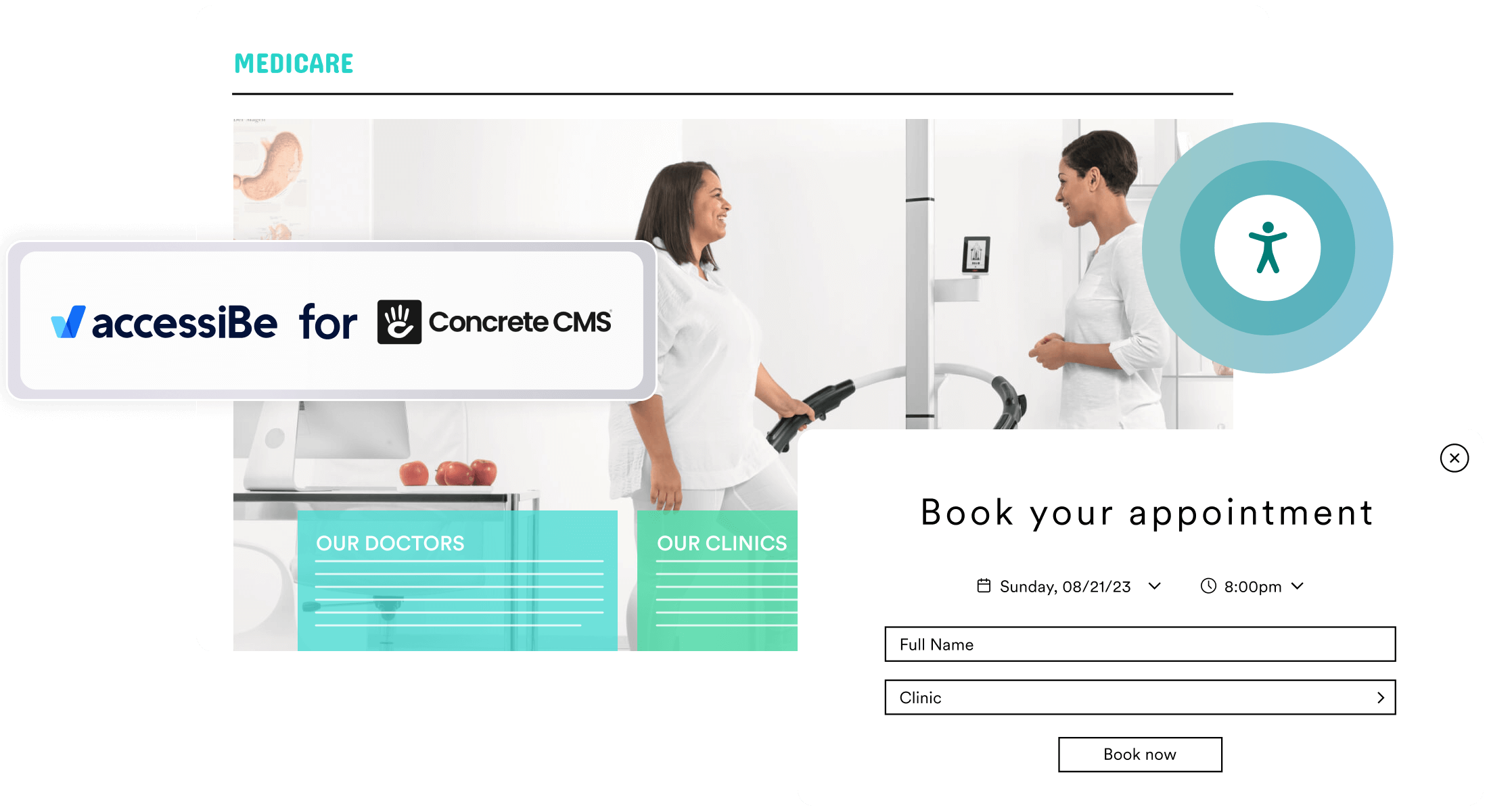Concrete is a free, open-source platform for building and managing websites. Concrete is designed to make it easy for people without any technical background to edit web pages.
Concrete promises to deliver a ‘delightful and efficient user experience’ but unfortunately, for people with disabilities trying to access a Concrete site, that won’t be the case. The core code of the platform does not currently incorporate accessibility attributes, and there are no accessible themes or addons that you can implement on your site.
As far as ‘delightful’ goes, people with disabilities won’t be delighted when they can’t access your website’s content. If your website isn’t accessible, then important elements such as links and buttons, menus, images, videos, and really everything else that makes surfing the web enjoyable, will be inaccessible to them. In return, it will be frustrating for you when you lose customers, followers, or sales because of it.
When it comes to ‘efficient’, there’s nothing less efficient than struggling to get through a website, which should be the clearest way to display information. For example, if your website isn’t compatible with screen readers and keyboard navigation, for the blind and motor-impaired respectively, then they’ll have to tab through the element by element, link by link. In today’s digital world, no one will put up with it and they will leave your site.
But the lack of efficiency doesn’t just affect people with disabilities but Concrete users as well. In order for you to make your Concrete website accessible, you’ll have to remediate it completely by yourself.
Remediating your site manually according to the WCAG is a meticulous and long process (up to 3 months), and can be complicated even for the most experienced developers. You can outsource accessibility remediation to an expert, but keep in mind that it can cost you thousands of dollars, resources meant for your website’s main goal.



